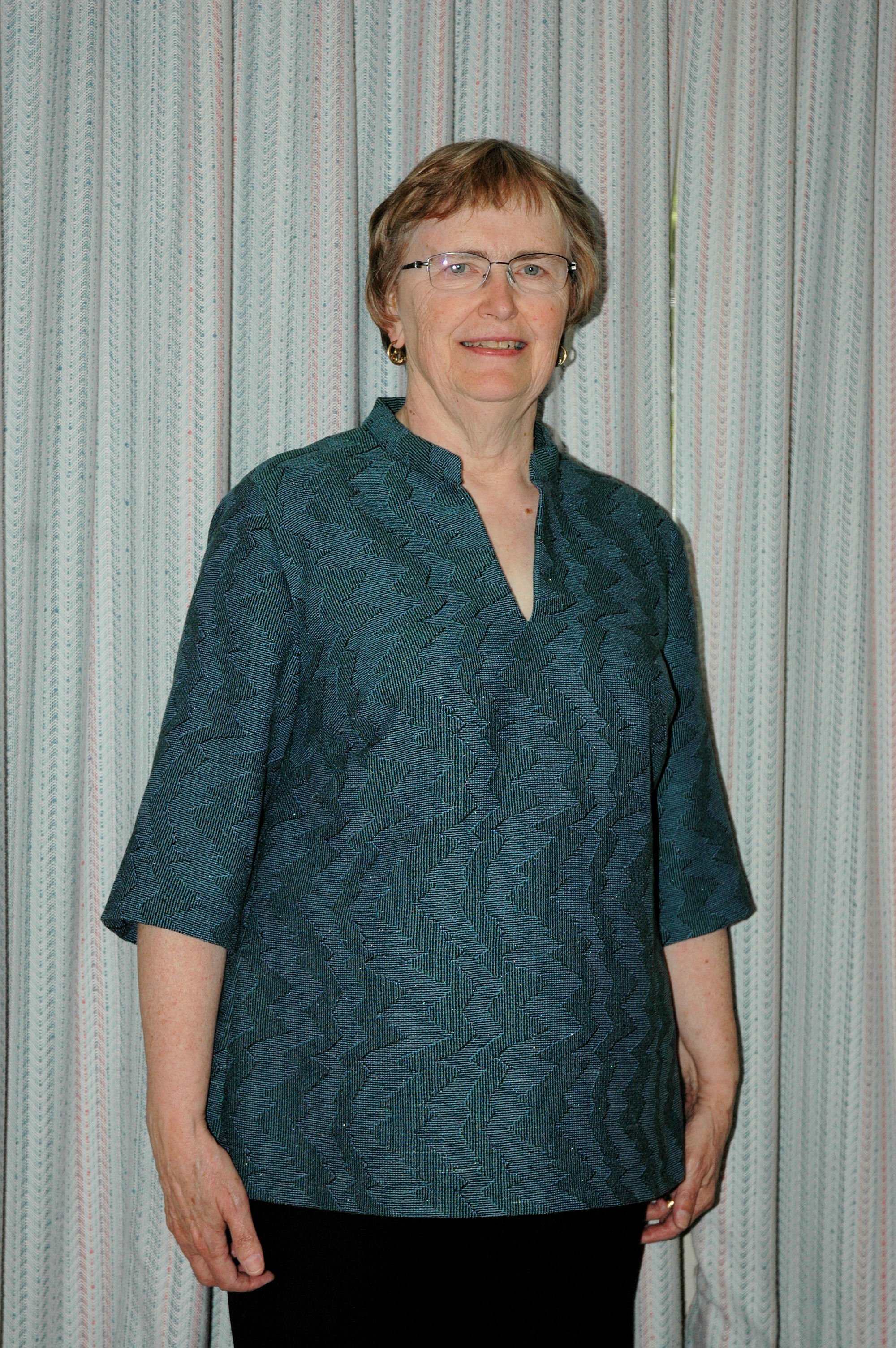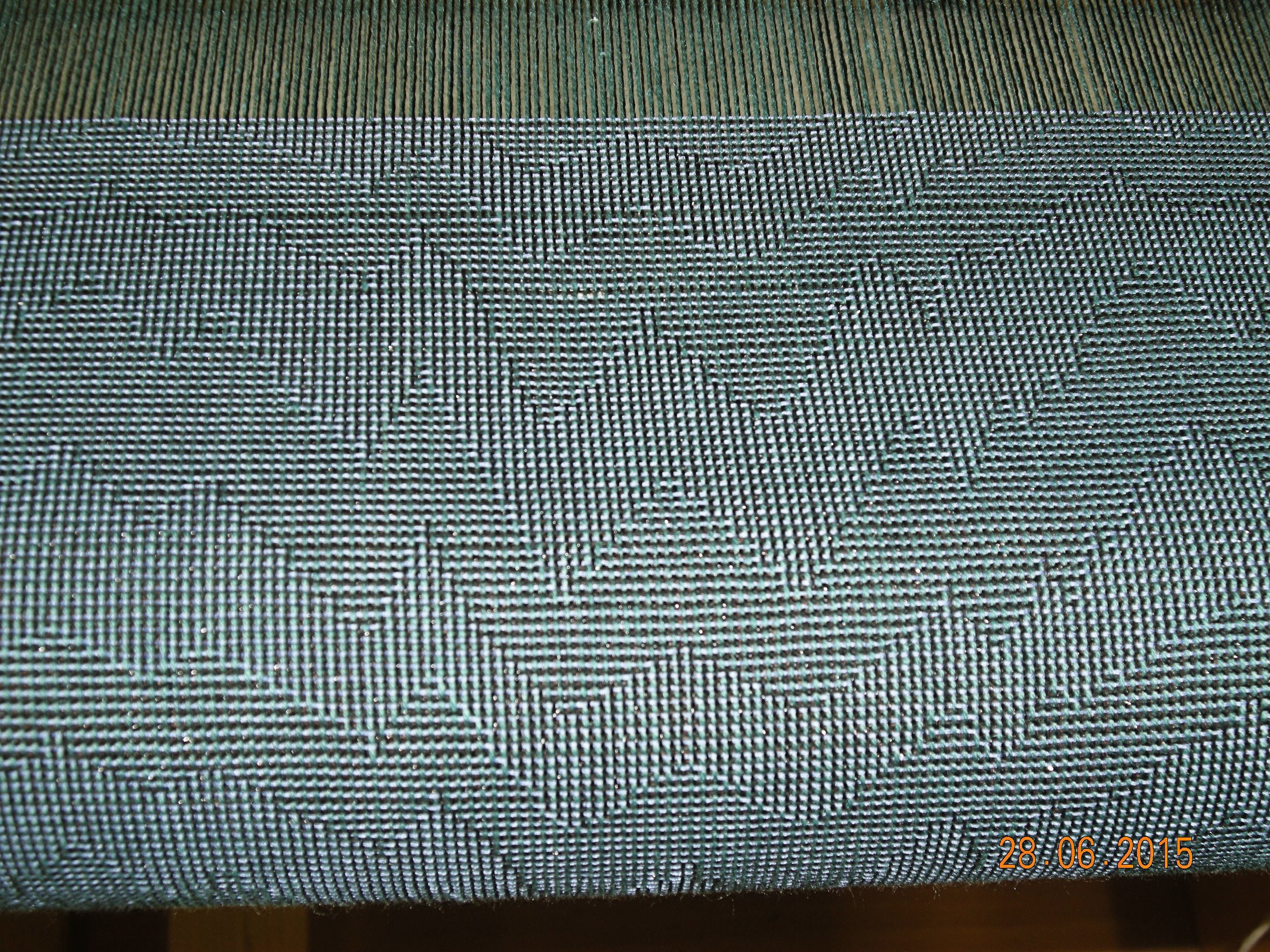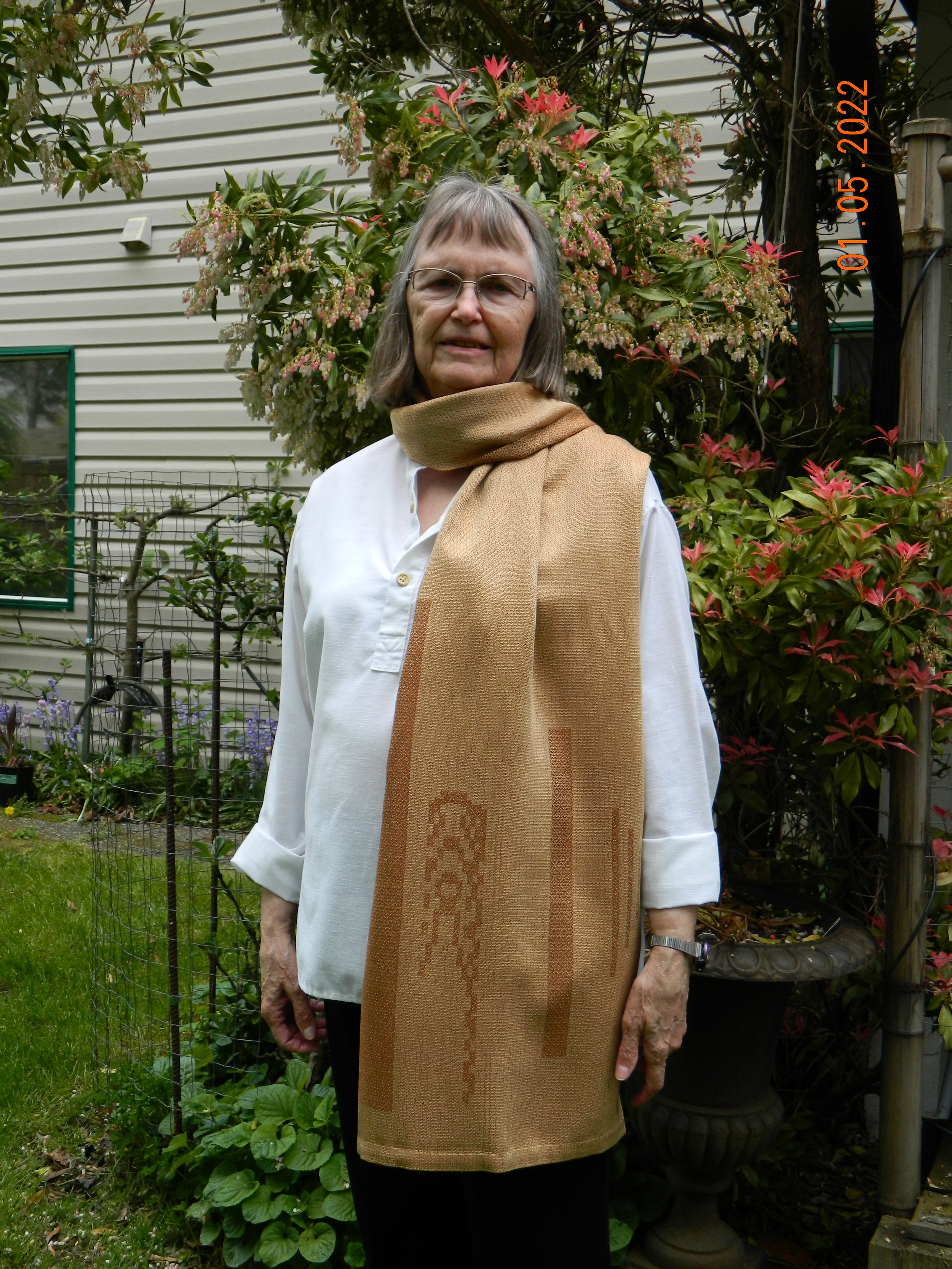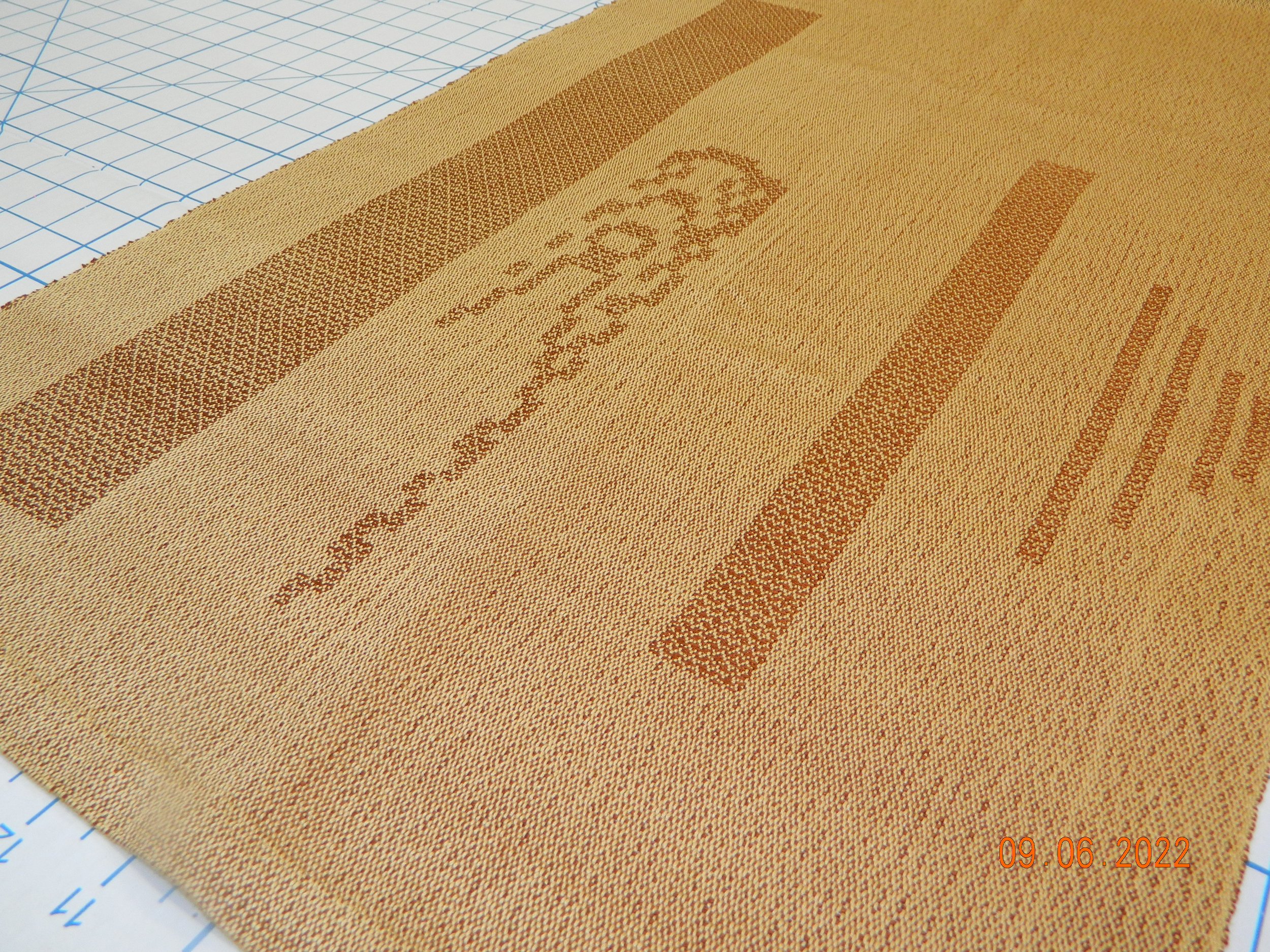Sheila Carey
I first became interested in weaving when I saw it demonstrated at a museum in the 1980’s. At that time I thought handweaving was only for blankets and rugs.
Then in the early 80’s, having moved to Prince George, BC I found Laura Fry (who later became a GCW Master Weaver) demonstrating weaving exquisite fabric for garments at a local mall. As I had been sewing my own clothing since about the age of twelve, I was intrigued.
I joined Prince George Weavers and Spinners in 1986. My first weaving teacher was GCW Master Weaver Noreen Rustad in 1988. I worked as a chemist, so for many years I wove as a weekend hobby because I found it both interesting and stimulating. I am most interested in complex patterning, and eventually acquired a 16 shaft compu-dobby loom.
Now retired, I still spend as much time at the computer coming up with designs as I do weaving. I prefer to make household items and garments, rather than art pieces. I seldom make two identical items, so most of my output has been for myself or gifts for family and friends, although I also sometimes contribute to guild sales.
I have moved twice since learning to weave in Prince George, and have found that one of the biggest benefits of being a weaver has been the new friends I have connected with in each new community.
British Columbia
Member since 1990
1998 to 2002 Secretary/Treasurer

"Shadow Weave Blouse", shadow weave on a 16-shaft loom, 2/16 cotolin, fine rayon and rayon/metallic. 325 x 86 cm, woven 2015, sewn 2017. In this yardage, shadow weave is woven in an irregular pattern to represent the mountains of BC and the colours of Convergence 2002. It was inspired by my sample for a GCW sample exchange which challenged members to make garments from the samples to wear to Convergence.

"Shadow Weave Blouse", shadow weave on a 16-shaft loom, 2/16 cotolin, fine rayon and rayon/metallic. 325 x 86 cm, woven 2015, sewn 2017.

"Barbed Wire Fence Shawl", Bergman tied weave on 16 shafts, 6p -ply silk (similar to 2/20 199 x 42 cm, 2022 This shawl was woven in Bergman tied half blocks with three ties in goose-eye order on 16 shafts. The remaining 13 shafts were used as blocks to create an image of a barbed wire fence with a tumbleweed caught in the wires. This was the result of a study group challenge to weave something based on “traces” of something old or no longer there. I had three photos of old fences, two of which had a tumbleweed caught in the wires. Bergman tied weave was chosen to create the images as it resulted in blocks with no long floats and gave an interesting diamond pattern that can be seen up close.

"Barbed Wire Fence Shawl", Bergman tied weave on 16 shafts, 6p -ply silk (similar to 2/20 199 x 42 cm, 2022
